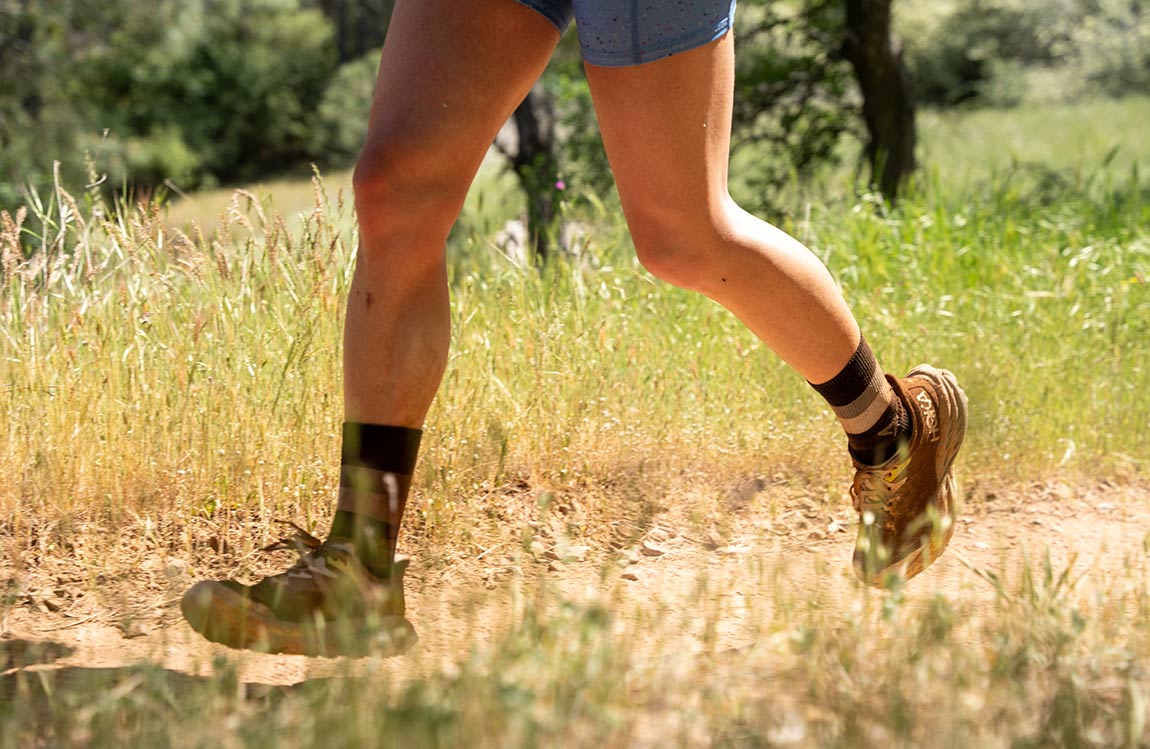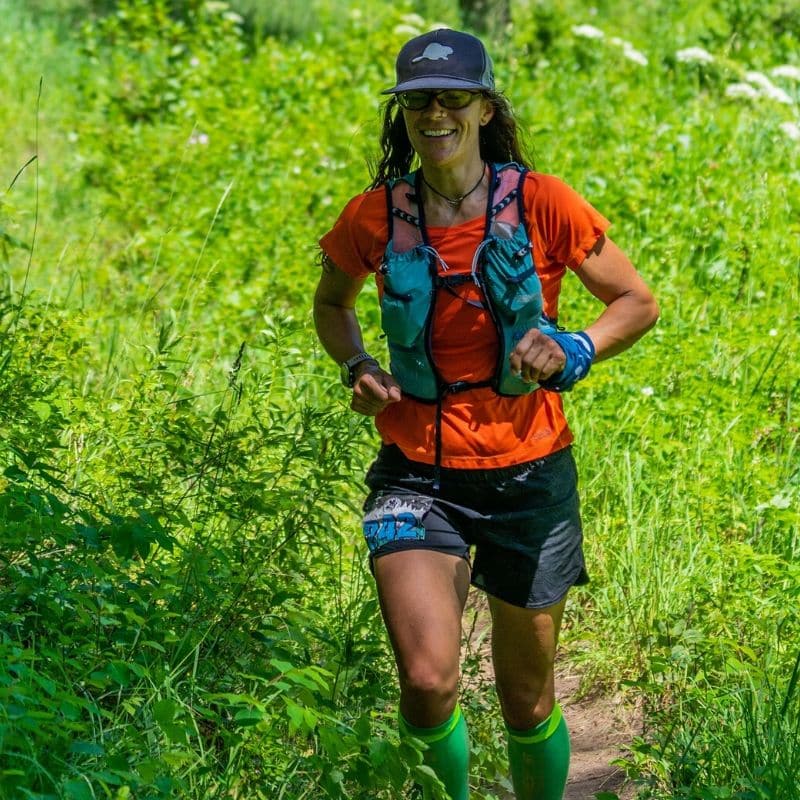
Take Advantage of These Fall Ultramarathon Training Strategies
By Darcie Murphy,
CTS Ultrarunning Pro Coach
Fall is a transition season for many athletes. The hot, hurried and event-filled summer has wound down, ushering in the quiet, darker months of fall and winter. Autumn is a great time to enjoy and address many aspects of trail and ultrarunning, from testing new gear and nutrition strategies, to running at night. Here’s how to have a great fall and set yourself up for a strong winter and year to come.
Testing new gear
You don’t have to look too hard to find a lot of of-end-of-season sales. It’s an opportune time to not only snag a discounted pair of your favorite trail running shoes or other tried and trusted products, but also to consider testing new gear you might want for next season. If your local trails don’t offer a lot of vertical gain and loss but you’re planning to race a mountainous ultra within the next 12 months, consider buying and getting accustomed to training with poles.
Cooler temperatures often require additional clothing layers, so finding a lighter weight, more packable layer or two may bode well for the future when you need to stow extra layers. If you’ve not yet needed to run at night or through the night, a headlamp may be on your list. A pair of road shoes is a good idea in case you’re going to train on the road or treadmill during the winter or when you travel for work.
Gearing up now is a good idea because there’s less chance that gear testing will have a negative impact on training and performance at this time of year. It is harder to make changes and test new gear when your training workload is high and when you are approaching goal races.
Nutrition options increase in cooler temperatures
Cooler temperatures tend to reduce the incidence of gastric distress. Because there is less heat stress, more blood flow may be available to the small intestine and other digestive organs. Therefore, it can be a great time to test more solid foods vs. liquid or semi-liquid calories. While the latter options can be a staple for shorter races, longer events such as 100-mile races usually necessitate consuming foods that are chewed and contain more fat and protein for satiety. Cooler temperatures often increase the range of tastes that appeal to athlete’s palates, too.
Additionally, there may be a decrease in running pace or a switch to more hiking this time of year, which also makes digestion during bouts of training easier. Use these opportunities to try new foods and fueling strategies that may serve you well in the future.
Night running is more accessible
We’re all aware that the hours of daylight decrease in the fall. Although that creates challenges for some runners, you also have an opportunity to improve night running skills. Because darkness lasts later into the morning and starts earlier in the evening, night running in the fall is less likely to compromise healthy sleep patterns. Many runners find night running in the summer more disruptive to sleep patterns because of the late sunsets and early sunrises. In line with testing new gear, this can be a way to understand how long certain running light systems last at various brightness levels. This improves a runner’s comfort running in darkness, and more time spent running in the dark enhances night running skills you’ll need in longer ultramarathons.
► Free Ultrarunning Training Assessment Quiz
Take our free 2-minute quiz to discover how effective your training is and get recommendations for how you can improve.
Try pacing all night if considering increasing your race distance
There are still plenty of races on the calendar. If you are considering increasing your race distance to one that would require you to run through the night, gain experience by pacing another runner through the entire night. Learning to predict how your body and mind react during those ‘witching hours’ between about 1-4 AM can help you and your crew plan strategies for late-night success.
Enjoying This Article? Get More Free Running Training Tips
Get our coaches' best training advice, delivered straight to your inbox weekly.
Building off several hours of night running, moving through an entire night tests your fortitude as well as your lighting systems and cooler weather gear. Don’t know anyone racing overnight this fall? Many races have open forums where you can connect with runners requesting pacers. Pacing another ultramarathon runner through these hours may also help you decide whether you’re ready to or want to race through the night. Approaching all night running in this manner is a bit less risky than doing it in a race scenario for the first time.
As summer fades, autumn heralds a shift of focus to resting and reflecting on the past season. It’s also ripe with opportunities to improve areas of training that are limiting factors for your performance and growth. In those moments of reflection, take time to be curious. Discover how you can use this time to reach for improvements and to feed your excitement for what’s ahead. The right approach, patience, and creativity open you up to endless opportunities. Get out and find what this change of season has to offer you.

